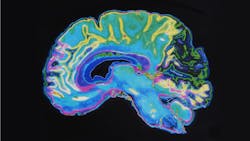How to Get Past the Stalemate Between AI and the Medical Industry
If there are ways AI can expedite diagnoses while protecting sensitive data, would medical networks use it? The short answer is yes, but there are still challenges facing the healthcare industry when it comes to encrypting data and sharing it. While the benefits are apparent, medical networks can’t shake the burden of protecting their patients—nor do they want to.
There are various use cases in which implementing AI in medical imaging would benefit patient care and assist clinicians in diagnosing:
- Patient positioning in scanning machines
- AI-based DICOM metadata
- AI-based labeling
- Deep learning-based image reconstruction
- Disease screening and detection
AI-assisted imaging can decrease time to diagnose patients with chronic diseases by flagging areas of concern and even clarifying images, making it a little easier for clinicians to examine.
During A3’s Vision Week, Stacey Shulman, VP of the Internet of Things group and general manager of Health, Life Sciences and Emerging Technologies at Intel, discussed the potential of AI-powered medical imaging, as well as the challenges the industry faces.
“We, as consumers, have digital access to nearly every part of our life,” she began. “I can get my DNA information digitally, but I still can’t get a copy of my X-rays.”
With the exception of entities like the Mayo Clinic and the VA Health Care System, who are already using some pretty advanced technologies, many healthcare systems are behind the transformation curve.
Shulman explained results from an Intel and Concentrix survey on how the medical industry is viewing AI. Before the pandemic (in 2018), 54% of respondents expected widespread AI adoption. During the pandemic (2020), that percentage jumped to 84%.
This means the medical community is starting to have the digital transformation conversation. That’s not the medical industry’s fault, though. It’s limited by the data it can share and the needs of the developer community. To train AI models, data is a requirement.
Shulman pointed out that an obvious solution would be to decrease data protections, but also noted that likelihood was not high.
Data isolation would be another solution. Keeping data secure and close to the point of origination would enable organizations to leverage its insights. Another issue is the size of the data. The amount of data generated is enormous and transmission issues would occur.
This is where federated learning can lend a hand. The idea is to train models on distributed and private datasets without moving them and then create a network of models based on region.
“The concept of ‘don’t move the data, move the algorithm to the data,’” Shulman explained. “That area of disaggregation is something we’re seeing quite a bit.”
Most hospital networks don’t have in-house AI capabilities, so getting the developer community involved is another issue at hand. Developers need data to train models, which hospitals can’t give up easily.
“The way I like to look at artificial intelligence in the medical industry is it really needs to become the new operating system,” she said. “We need to take artificial intelligence and move it into the device itself…and then we need to take that patient information and that connected information, build robust models so that we understand regional health…so we can detect faster.
She explained that the robust regional models should be combined in national and even global models so we can understand disease spread and trends.
“I feel pretty hopeful about where the industry is going,” Shulman said. “For the healthcare industry, we have to start making baby steps in the industry to get artificial intelligence providing real results.”
About the Author

Marie Darty
Group Multimedia Director, Engineering & Manufacturing
Marie Darty is a digital media professional currently serving as the group multimedia director for the Manufacturing & Engineering Group at Endeavor Business Media. A graduate of Jacksonville State University, she earned her Bachelor of Arts in digital communication with a concentration in digital journalism in December 2016. In her current role, she leads the strategy and production of multimedia content, overseeing video series planning and editing. Additionally, she oversees podcast production and marketing of multimedia content.
